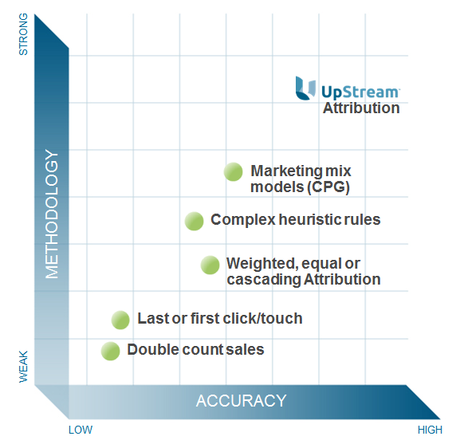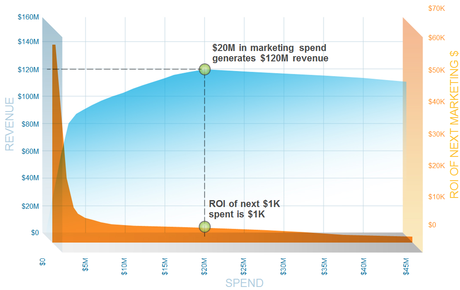 Over the years marketers have attributed revenue using a variety of methods – last or first click, weighted or cascading attribution, complex heuristic rules, marketing mix models – but none of these methods were accurate or actionable. For some companies, the inability to integrate disparate data sources, including offline and brick & mortar data, limits the multi-channel view. Others struggle with the age-old question of what to do with attributed sales regardless of the accuracy.
Over the years marketers have attributed revenue using a variety of methods – last or first click, weighted or cascading attribution, complex heuristic rules, marketing mix models – but none of these methods were accurate or actionable. For some companies, the inability to integrate disparate data sources, including offline and brick & mortar data, limits the multi-channel view. Others struggle with the age-old question of what to do with attributed sales regardless of the accuracy.
Outlined below are five benefits of attributing revenue accurately and what to do with that information:
1. Understand revenue drivers using ALL of the data
Developing a comprehensive database of all of a marketer’s data is complex and one of the most time-consuming parts of the process. Many top retailers capture rich information that should be included such as:
- Catalog mail file
- Email sends/clicks/opens
- Retargeting clicks/impressions
- Targeted Display
- Comparative shopping site history
- Affiliate behavior
- Paid search
- Natural search
- Social media behavior
- Brand Equity (purchases driven by previous marketing)
- Store area
- Calendar Effect
By including all of the data – online and offline – a marketer can understand the revenue drivers for each channel, as well as what is not driven by marketing at all. For established brands with a loyal customer base, large portions of sales may be attributed to brand equity and prior marketing. Why let an ad take full credit for a purchase if we know the customer was near a birthday and more likely to purchase anyway?
The icing on the cake is that there’s now a database with everything – which can be leveraged for other analyses or for creating triggered marketing programs!
2. Quantifies the value of a single marketing treatment among multiple marketing campaigns at the customer level
Inspired by biostatistics, UpStream’s revenue attribution methodology uses time-to-event modeling which incorporates the decay of a treatment’s impact over time. In other words, the timing, order, and combination of marketing treatments will impact how much of each individual’s purchase is attributed to each marketing treatment. Understanding the value of each marketing treatment is the first step in creating a customer contact strategy for each customer.
3. Determine the value of a single marketing channel in a multi-channel setting
Zoom out of the detail of the value of each marketing treatment and understand what each marketing channel contributes to the big picture. Come budgeting time, each channel will need to have spend and sales targets based on the value of each channel. Does the Affiliate channel really drive a large portion of sales or is the channel overly allocated? If Paid Search accounts for 2% of my attributed sales instead of 5%, and is 4%of my overall spend, should I continue to invest or cut back?
4. Understand what motivates individuals to buy
With customer-level revenue attribution, each customer’s shopping and purchase behavior is rigorously evaluated. The result is a view of the customer that shows insights such as:
- CustomerA buys every year in November for holiday gifts, and is more likely to purchase from a catalog than any other channel. Send catalog.
- CustomerB isn’t moved by catalog, but responds to email as well as display ads. Send email and serve retargeted ads to customer.
- CustomerC is just as likely to purchase after receiving a catalog or email, purchasing in the retail store. Send email.
Each company will have different goals – optimize for best ROI, invest deeper for new customer acquisition, send best customers a catalog for branding even if they will purchase through email – so understanding the motivators will help marketers determine the strategy that works for their customers.
5. Know where the next marketing dollar should be spent
Now that it’s clear what each marketing treatment and channel is contributing, and what motivates individuals to buy, the next step is to determine where to spend the next marketing dollar. Having the ability to identify the most profitable customers for each channel and the most profitable channels for each customer at the same time enables marketers to determine what the optimal spend should be.
Using the yield curve below, a marketer would know that $20M in marketing spend would generate $120M in revenue, and that the next $1K spent would = $1K in revenue. Spending to break-even allows the company to invest in growth while not over or under spending.

Learn more about Advanced Revenue Attribution or sign up for a demo.
